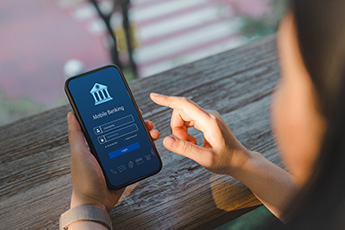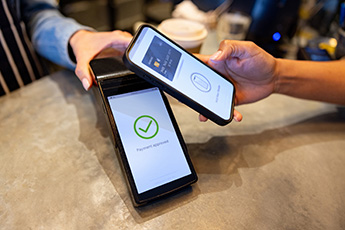Since you are always looking to get new customers and retain existing ones, we want to point out that Neilsen reports 92% of consumers trust referrals from people they know, and people are 4x more likely to buy when referred by a friend. Mapping out your customers and trying to figure out who their friends are could be an easy way to boost business in 2020.
Another area of focus for banks that is boosting business is mobile banking. The key here though is that app features can either greatly satisfy customers or turn them off.
Offering too many features can actually frustrate customers, according to the JD Power 2019 US Banking Mobile App Satisfaction Study. The research firm found that customer satisfaction decreases the more baffled people become in figuring out complex features, or when there is just "feature overload."
The take-away for community banks: keep it simple. When customers can easily understand how to navigate an app and quickly perform their desired tasks, they rate the app more highly, JD Power says. The key is to limit content to functions that customers really want to perform on the app, as well as information that they can easily digest. Save the more complex tasks and more lengthy discussion about all of your products and services for your website or with a relationship manager.
The next evolution for mobile banking apps according to JD Power is personalizing features and creating a "curated" user experience that streamlines the process according to what customers do most often.
Another analysis by UserTesting in this area found that while customers liked the aesthetics and ease of use of their bank's mobile banking app, their overall satisfaction was impacted by their frustration at not being able to figure out something simple, such as how to turn on fraud alerts.
Community banks could also take cues about what people really like about apps--and what really turns them off--by reading customer reviews of apps offered by their bank or other banks to stay on top of trends.
Customers get upset when their bank eliminates a feature they really like, and then they get more upset if there is no easy way to provide feedback. Clear and open channels of communication are critical.
If also helps to research what other mobile bank customers want from their app; but at the end of the day, you need to know what your specific customers want more than anything. To find out, you may want to conduct your own customer satisfaction surveys about your app features.
Finally, don't simply eliminate features customers tell you they like, at least not without an explanation. Also, be sure to train your employees on how to use the app, so they can be of real service to customers when they are having problems or issues.
As you always do, focus on the customer and things will probably work out just fine no matter your features and benefits.




